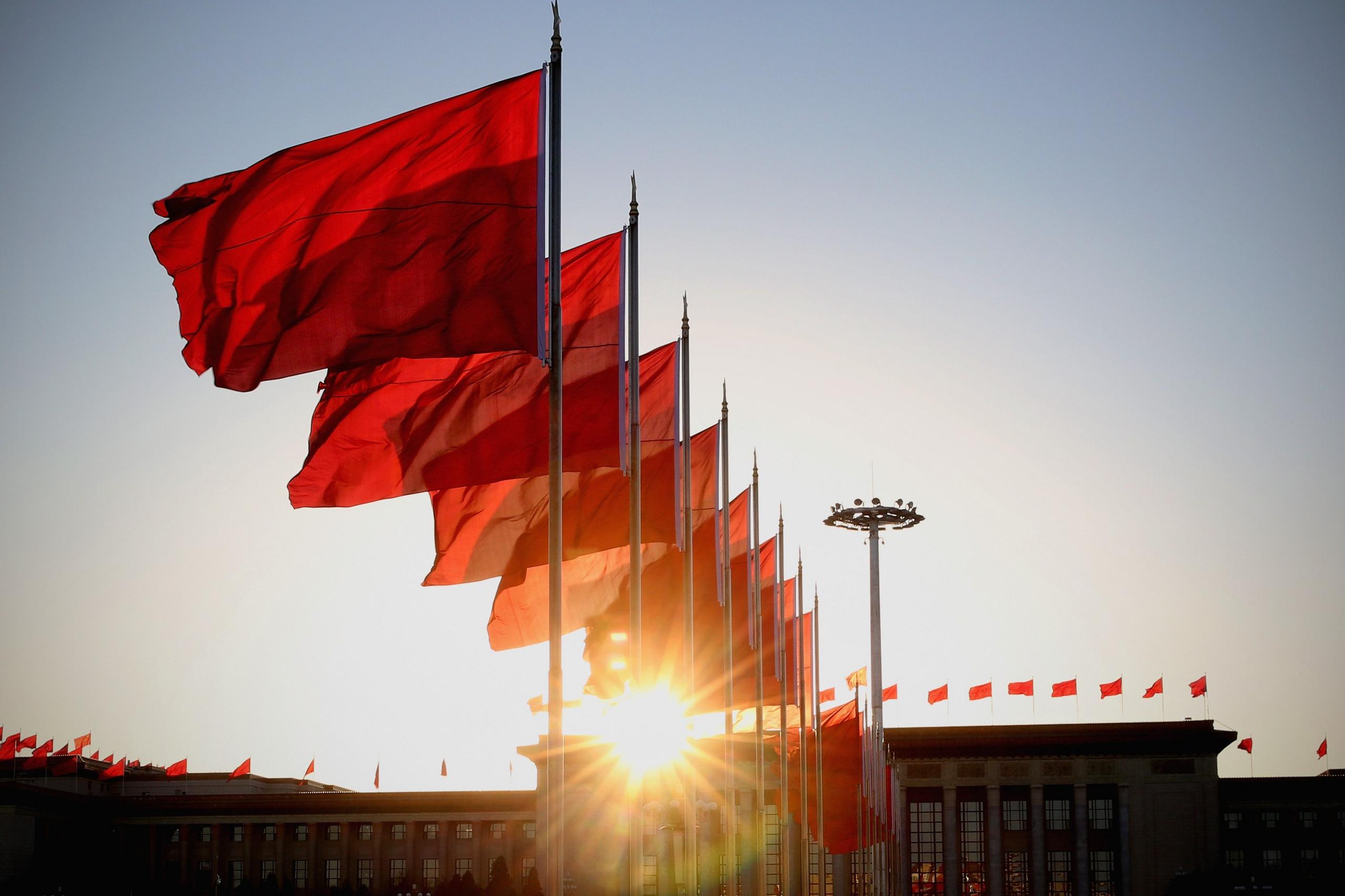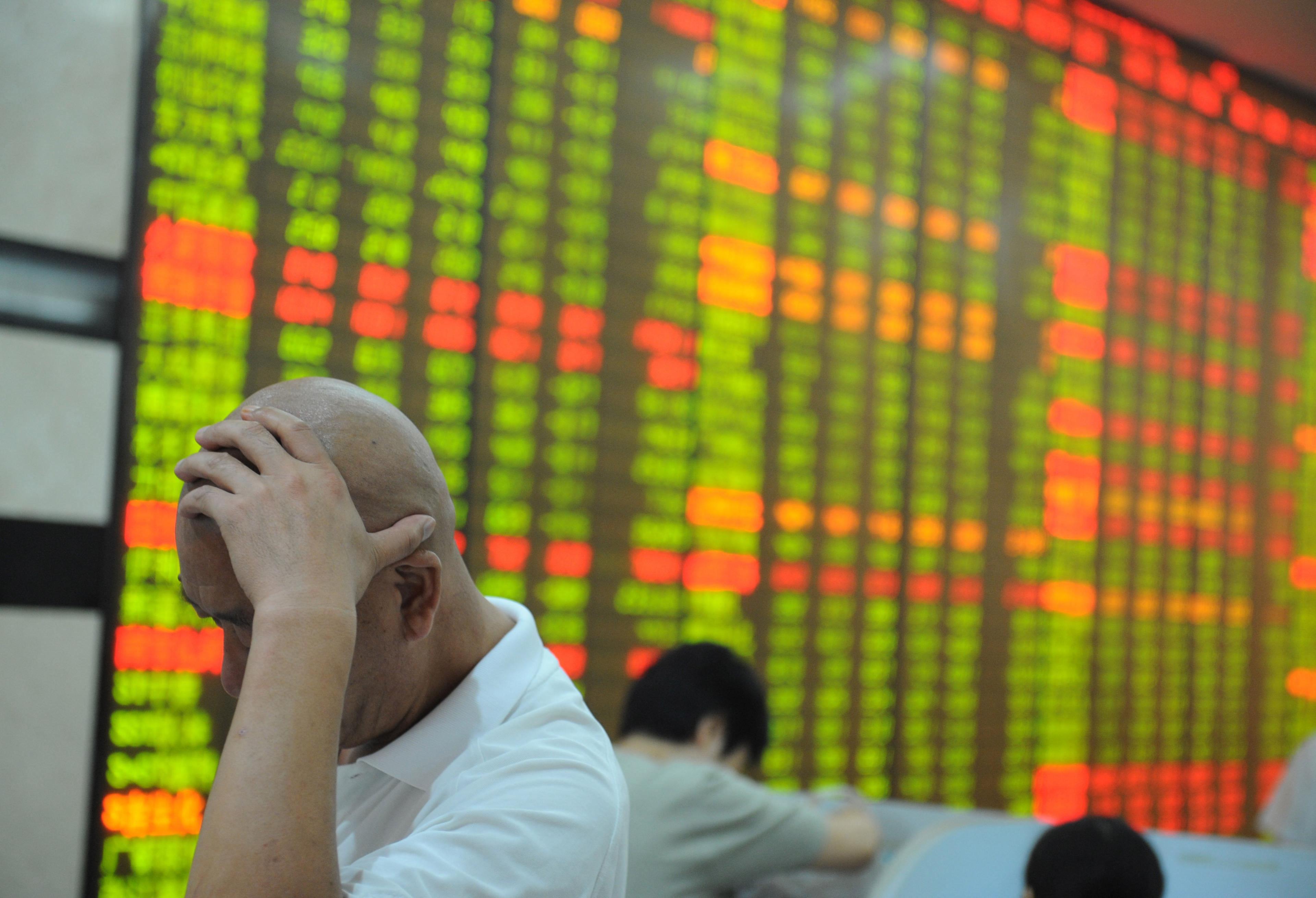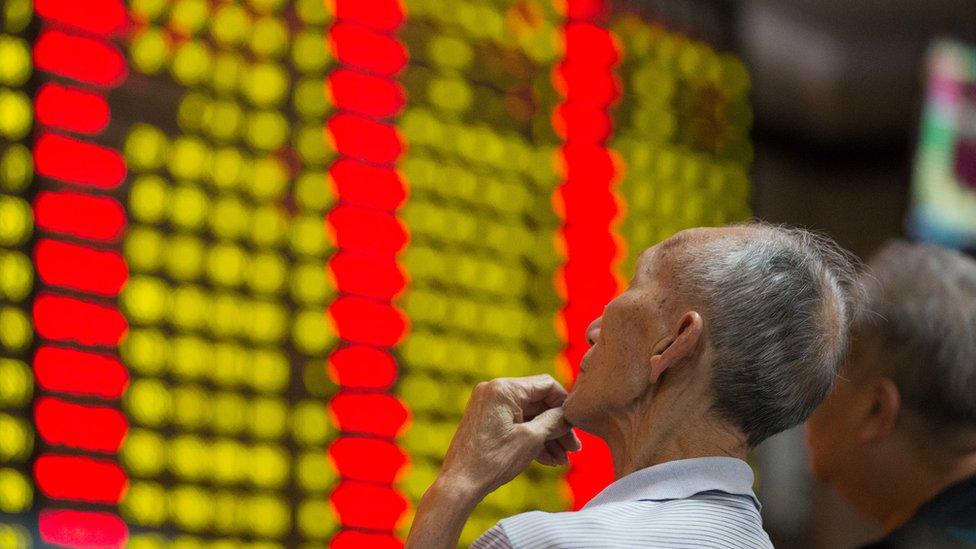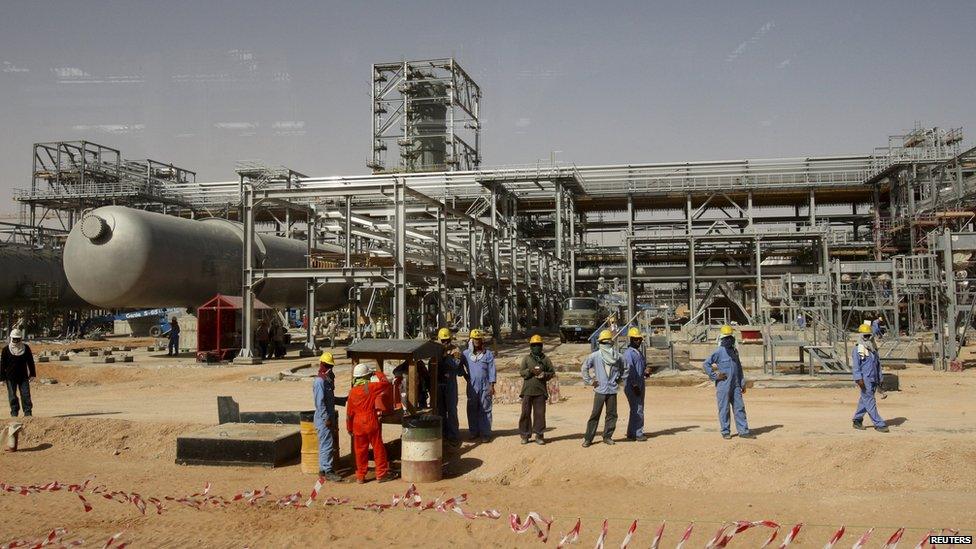China's market turmoil looks set to continue
- Published

The tumbling and eventual halt of trading of Chinese shares for the second time in four days has global investors holding their breath.
Stock markets in Asia and Europe have all followed suit and fallen sharply. The question is how trading in China will resume on Friday morning.
"There's a large risk that we are going to see this continue tomorrow," Amy Zhuang of Nordea Bank told the BBC.
"Chances are that there's again some major volatility, I would be extremely surprised to see a calm opening. And probably, this nervousness will last all of next week."
Trying to stem the downward slide, Beijing is expected to step up efforts once again to stabilise investor confidence. But as many of the measures introduced in the past failed to have the desired effect, it will prove to be hard to convince investors that all's well.
Finding the right measure
Introducing what's called a "circuit-breaker" to stop trading in the case of a sharp fall appears to be yet another example that hasn't really worked in the way intended. The idea is that a plunge of 5% will lead to a 15-minute pause to allow the mood to cool down, so that trading can resume more level-headed after the break.
But what happened on Monday and then again on Thursday did not quite go according to that plan.
"Once you have that 15-minute pause, every trader in the market is just going to be sending out a ton of "sell" orders and so as soon as the market reopens, it is flooded with those orders and quickly hits that 7% percent threshold," Angus Nicholson of IG Trading told the BBC.

Desperate traders as the green across the boards indicates heavy losses
In fact, selling after the pause continued at such a fast pace that the automatic cut-off at 7% was overshot.
By the time the automatic trade suspension came into effect, the index was already beyond the threshold, down 7.2%.
As a result of it all, Thursday was the shortest trading day in the 25-year history of China's stock markets.
Regulators to the rescue?
In fact, many experts now caution that too much regulatory measures will only add fuel to the fire.
"Many people in the market have reached the conclusion that maybe the best thing is to let go completely and let the market correct itself," said Nordea Bank's Ms Zhuang.
"If you look at the fundamentals, a lot of analysts say the market is still much too expensive and that this is just a way of correcting the very long and large upswing in the first half of 2014."
In that case, intervention on the stock market would not stop, but merely delay the sell-off. On the other hand, allowing the market to correct itself would "let it find its natural floor where investors are happy to buy and hold stocks," IG Trading's Mr Nicholson explains.
When Chinese stock markets tumbled in June 2014, sending shockwaves around the globe, the government introduced a flurry of measures to reassure traders.
Interest rates, for instance, were cut to make it cheaper to borrow money, while large state companies and funds were ordered to buy shares to stabilise the market.
A six-month ban restricting large shareholders from selling is set to expire at the end of this week and on Thursday, the Chinese Securities Regulatory Commission (CSRC) announced new rules to replace that ban.
To "avoid shocks to the market", the CSRC said that investors holding more than 5% of a stock can not sell more than 1% every three months - and that they must file their plans 15 trading days in advance.
"Already from tomorrow, the market will react," Ms Zhuang explains. "You're free to sell if you don't fall under that regulation - so what would you do? If all the bigger ones will only be allowed to sell gradually, then you'd better beat them to it."

With a weaker yuan, even the FED might think twice before raising rates
The cost of exports
There remains the debate over what exactly triggered the sell-off this week in the first place. On Monday, manufacturing data came in weaker, though not weak enough to sufficiently explain such a dramatic reaction on the markets.
China's gradual depreciation of the yuan currency seems a more likely reason for the sharp falls. Every day, the People's Bank of China sets a midpoint to the dollar, from which trading is allowed to deviate by 2% in each direction. On Thursday, that midpoint was lowered for the eighth consecutive day.
As the central bank is thought to have a much greater insight into how the Chinese economy is performing than a normal trader, a devaluation is seen as a pointer that the economy is doing worse than official statistics suggest.
The lower currency would then boost exports by making them cheaper, which in turn would drive growth in the country's crucial manufacturing sector.
Global currency effects
Yet a weakening of the yuan goes far beyond the borders of China, warns Mr Nicholson. "Such a significant devaluation has major global consequences. The weakening of the yuan will have a significant effect on other currencies and central banks."
It might delay the next rates increase by the Federal Reserve in the US and it could prompt further weakening by the European Central Bank or the Bank of Japan.
Pushing down the yuan to prop up exports also puts pressure on other regional currencies in Asia. The Singapore and Australian dollars are already falling compared with their US counterpart. The Korean won, Malaysian ringgit and Indonesian rupiah are also lower after the weakening of the yuan.
The next days will show how Beijing chooses to play its cards. Weakening the yuan might help exports, but will add to concerns over the health of the Chinese economy.
Heavy-handed intervention on the stock market, though, is equally unlikely to instil confidence that the government has the upper hand in controlling the unruly forces of a free market.
- Published7 January 2016

- Published7 January 2016

- Published6 January 2016
